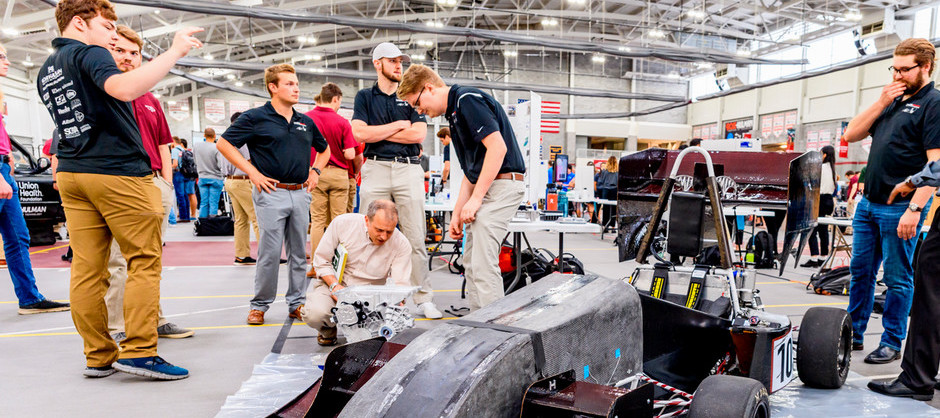
Mechanical Engineering Capstone Project Guidelines for Sponsors
Real-world projects for Capstone design are a vital part of the Mechanical Engineering curriculum at Rose-Hulman. Our seniors work in teams (typically four students) and value the chance to work with a client. Student teams work on design projects for three consecutive terms with the main offering starting during the fall term and ending spring term (beginning of September through end of May).
Characteristics of Great Capstone Projects
- Projects that have realistic solutions involving proven technologies
- Project is comparable to a project given to an entry-level engineer
- Multiple solutions that are acceptable to the customer
- Give students autonomy to design, build, and test solutions
Projects to Avoid
- Technical challenge that has evaded your engineers for years or research project
- Critical path projects especially if it affects the well-being of your company
- Project that requires excessive proprietary material or trade secrets
- Project that requires development tools or instrumentation that RHIT does not possess
Client Expectations
- Provide a project liaison that communicates with students regularly to ensure timely feedback. Approximately an hour every other week works well.
- Sponsors should be aware that not all projects end successfully and sometimes students fail. This is a learning environment, and we cannot guarantee success.
- Support the cost for the development of prototypes or any necessary travel.
Responsibilities of RHIT team (Students & Instructor)
- Typically, teams of three to five students are assigned to each project.
- A faculty instructor oversees the students’ progress from an academic perspective.
- Students are expected to make substantial weekly progress on campus (~ 12 hours/week for each student)
- Students communicate with clients on a regular basis and present major accomplishments once a term and provide a written report at the end of each term.
Benefits of Sponsoring a Team
- Impact the learning of students
- Promote your culture
- Get a new perspective on a problem